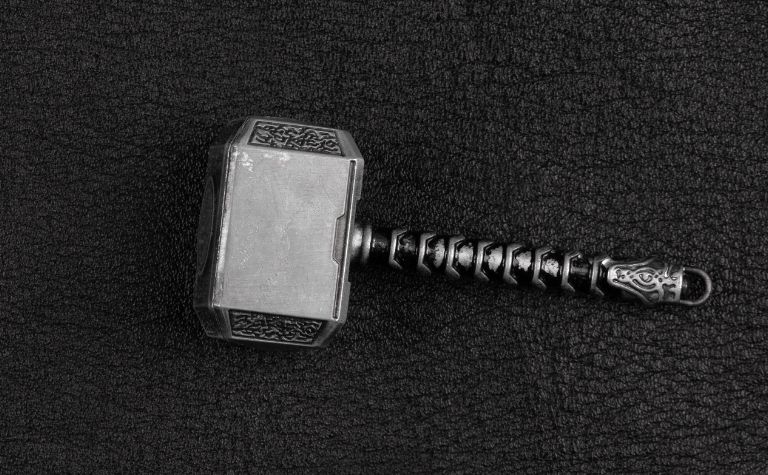Discover the intriguing character of Sif in Norse mythology. Known as Thor’s wife, her symbolism extends beyond familial connections, touching themes of fertility, beauty, and earth.
This exploration examines her historical significance and enduring influence in both ancient legends and modern interpretations.
Sif is known in Norse mythology as Thor’s wife, symbolizing fertility and the earth. Her golden hair represents harvest and renewal.
Though her role in ancient texts is limited, she continues to influence modern culture through literature, art, and interpretations of femininity and nature.
What is one of Sif’s most notable physical attributes? Who was Sif’s daughter? Did she have a son? What does Sif symbolize in Norse Mythology? What is Sif’s legacy?
Keep reading to learn the answers to these questions and others.
Also, see How Many Norse Gods Are There? to learn more.

Sif’s Identity and Family Connections
Sif is best known in Norse mythology as the wife of Thor, the thunder god.
Her presence in the mythological texts is significant, yet her character is often defined through her relationship with her more famous husband.
This connection to Thor, one of the most prominent figures in Norse mythology, solidifies Sif’s importance within the ancient pantheon.
One of Sif’s most distinguishing attributes is her golden hair, which is often described as shimmering and beautiful.
It was seen as a symbol of her enchanting beauty and grace.
In some accounts, her golden hair also represented fields of golden wheat, tying her symbolically to the earth and fertility.
Sif’s family connections extend beyond her marriage to Thor.
Together, they had a daughter named Thrud. Some sources also mention a son, Modi, though the accounts vary.
Sif was also the mother of Ullr, a god associated with archery and winter; though his father is not Thor but is left unspecified in the texts.
The mythology does not delve deeply into Sif’s personality or her life outside her familial connections.
Much of what is known about her revolves around her roles as a wife and mother and her relationships with other figures in Norse mythology.
Her character often appears supportive, devoted, and maternal, reflecting the societal norms and values of the time.
In sum, Sif’s identity in Norse mythology is tightly intertwined with her family connections.
Her relationship with Thor, her golden hair, and her role as a mother all contribute to her character.
While her appearance in the myths may be somewhat overshadowed by her more prominent husband, her attributes and connections make her an intriguing figure in Norse lore.
Her depiction offers a glimpse into the cultural perceptions of femininity, family, and fertility in ancient Norse society.

Sif’s Role and Symbolism in Norse Mythology
Sif’s role in Norse mythology extends beyond her familial connections, and she is often associated with the symbolism of fertility and the earth’s bounty.
Her character is representative of certain natural elements and agrarian ideals that were significant in ancient Norse society.
One of the most famous myths involving Sif is the story of Loki cutting off her golden hair.
This mischievous act by Loki led to a series of events in which the dwarves created new golden hair for her, along with other magical items for the gods.
Sif’s hair, once restored, is not merely an ornament but symbolizes the harvest and the renewal of life. This incident illustrates her connection to fertility and nature’s cycles.
Her golden hair, often seen as a metaphor for fields of golden wheat, emphasizes Sif’s association with agriculture.
As a symbol of the earth’s fertility, she could have been invoked or honored in agrarian rituals, though the specific details of such practices are not well-documented in surviving texts.
In Norse literature, particularly in the Poetic Edda and the Prose Edda, Sif’s presence is somewhat limited.
Her character is often overshadowed by the exploits of Thor and other more central figures.
Despite this, her symbolic importance as a representation of fertility and the earth is clear and reflects a broader understanding of the natural world within Norse cosmology.
While Sif’s character may not be as fully developed as some other figures in Norse mythology, her role and symbolism provide valuable insights into the beliefs and values of the Norse people.
Her connection to the earth and fertility highlights the importance of natural cycles and agrarian life in ancient Norse culture.
It reminds us of a time when the divine was seen every day, and the connection between the human world and the natural world was deeply intertwined.

Sif’s Influence on Modern Culture and Interpretations
Sif’s legacy extends beyond the ancient texts and has found a place in modern culture and interpretations.
While not as widely recognized as some other figures from Norse mythology, her image and symbolism have been adapted and utilized in various contemporary contexts.
In modern literature and art, Sif’s golden hair and association with fertility and the earth continue to inspire creative expressions.
Writers and artists have often drawn on her character to explore themes related to femininity, beauty, and nature.
Her image has been used to represent not just physical beauty but also inner strength and resilience.
Sif’s influence can also be seen in popular media, including film and television.
For instance, adaptations of Norse myths in modern entertainment sometimes feature Sif as a character, reflecting her continued relevance.
While these portrayals might take liberties with the original myths, they often maintain her connection to themes of fertility and the earth’s bounty.
Furthermore, Sif’s image has been invoked in discussions and interpretations of contemporary issues related to gender and societal roles.
Her depiction as a supportive wife and mother in the ancient texts can be analyzed in light of modern understandings of femininity and family dynamics.
The way she is portrayed in ancient myths provides an interesting lens through which to examine evolving cultural attitudes and norms.
In some neo-pagan traditions, Sif has been embraced as a symbol of motherhood and the earth, with some practitioners honoring her in rituals and ceremonies.
Her connection to natural cycles and fertility resonates with those who seek a spiritual connection to the earth.
In conclusion, Sif’s influence on modern culture and interpretations is multifaceted and continues to evolve.
Whether through creative expressions, entertainment, or contemporary spiritual practices, her character and symbolism have found new life and relevance.
Sif’s legacy in Norse mythology has proven to be enduring, reflecting both ancient values and modern sensibilities.
Her presence in today’s culture is a testament to the universal and timeless appeal of the themes she embodies.
Conclusion
The exploration of Sif’s character in Norse mythology reveals a figure who, while not as prominent as some of her divine counterparts, holds a unique and enduring place within this rich mythological tradition.
Her legacy serves as a reminder of the timeless nature of the themes she represents and the enduring appeal of Norse mythology.
In reflecting on Sif’s multifaceted character and her place within both ancient and modern contexts, it becomes clear that she is more than just a supporting figure in the grand tapestry of Norse lore.
Her story, though not extensively detailed in the ancient texts, continues to resonate and contributes to our understanding of human nature, culture, and spirituality.
Her enduring presence is a testament to the power of myth to speak across time and culture, connecting the past with the present and the human with the divine.
